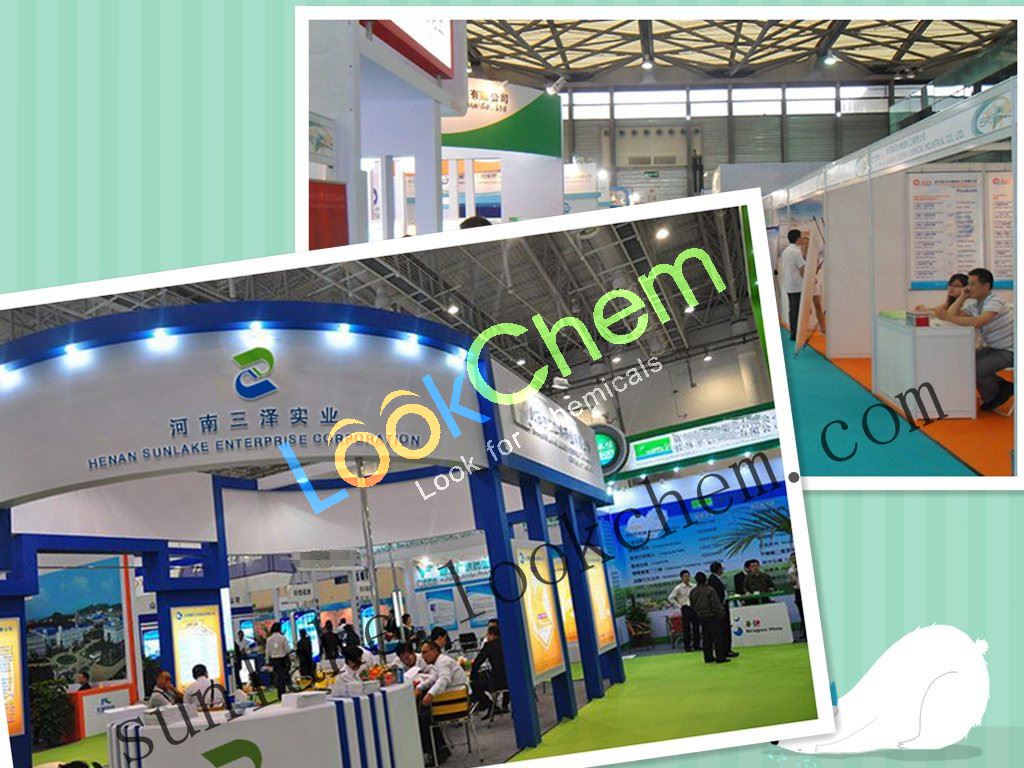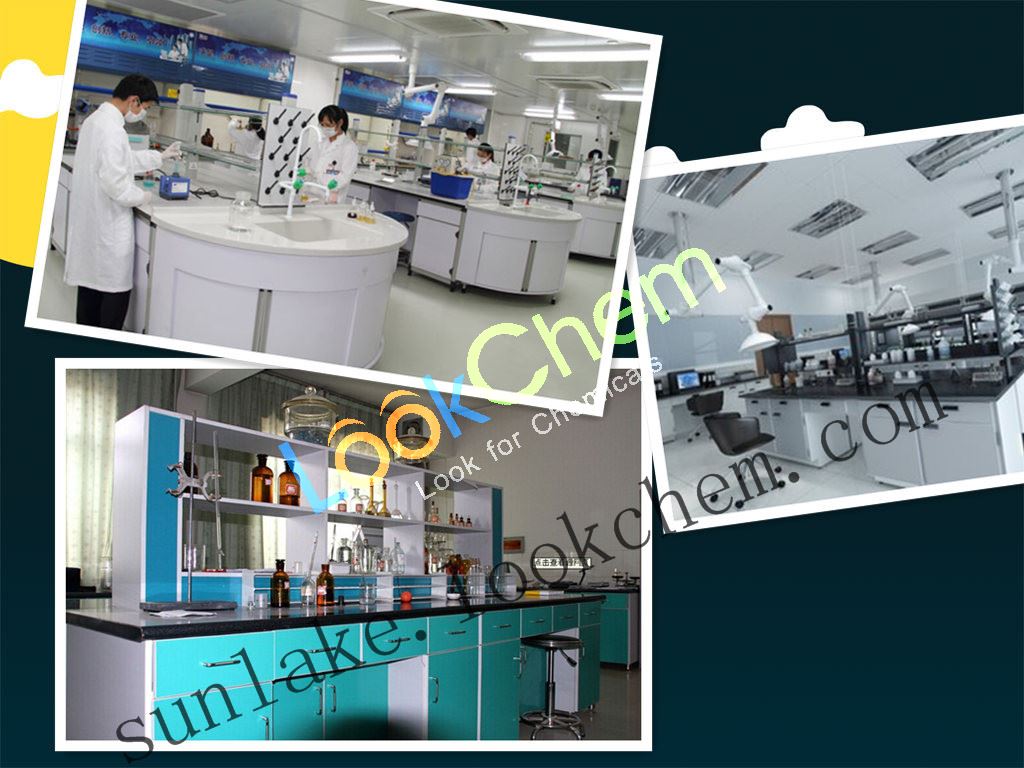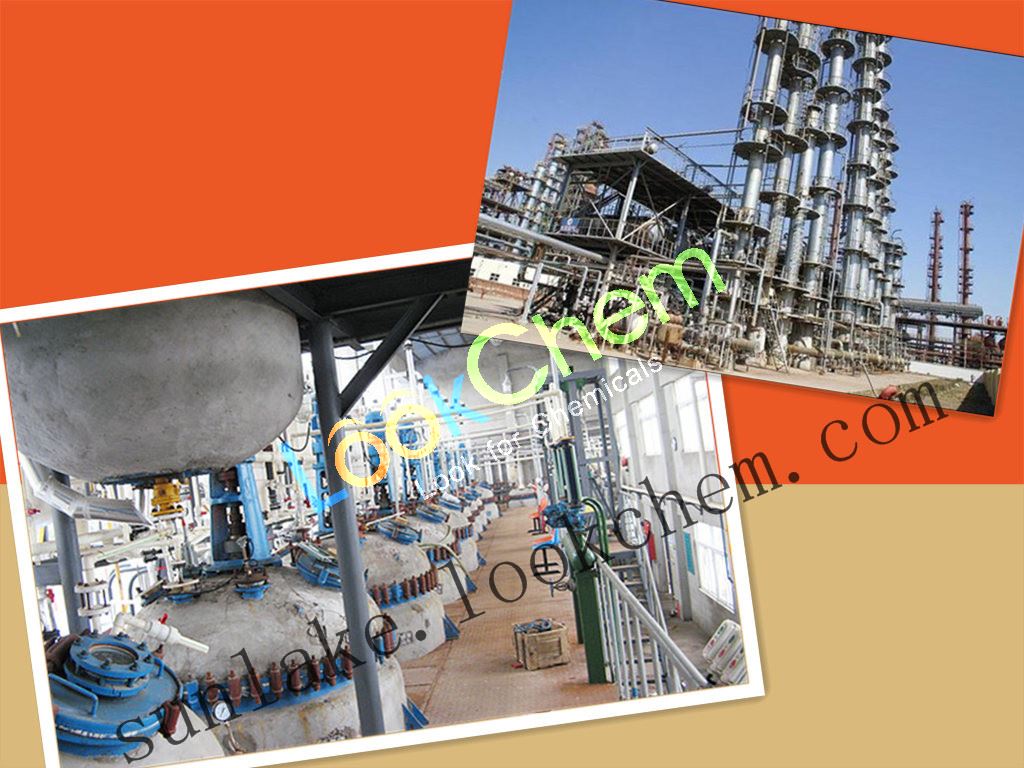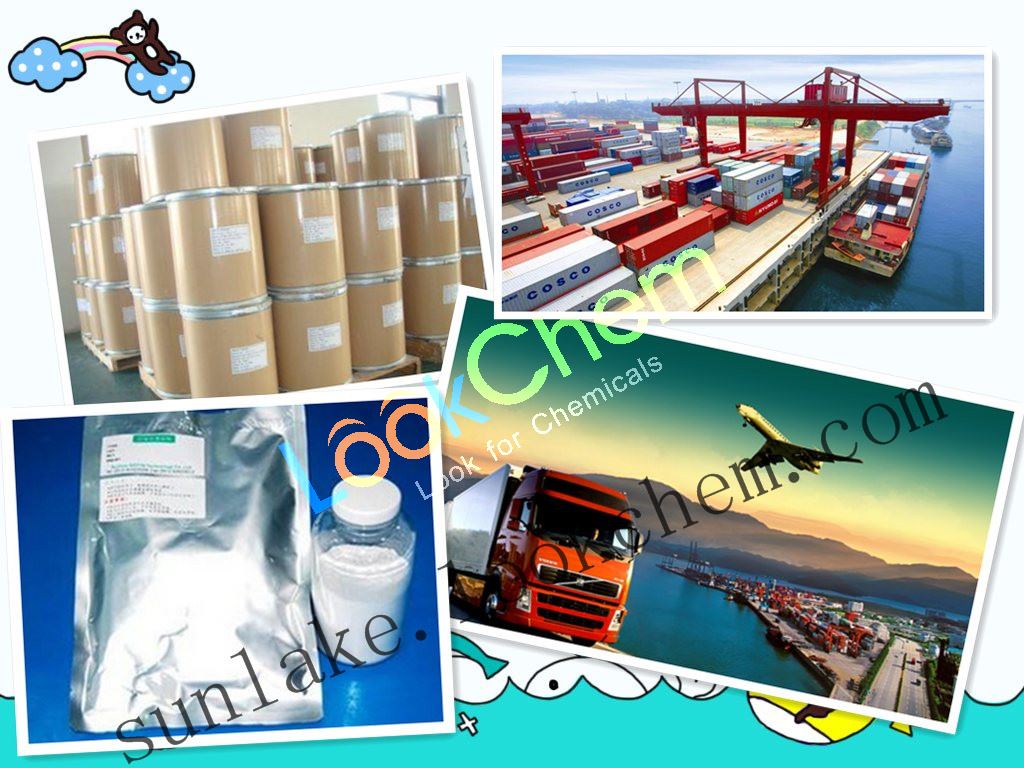Product Certification&
Enterprise Certification
Country: ![]() China (Mainland)
China (Mainland)
Business Type:Trading Company
Tel: 17734809689
Mobile:
Tel: 17734809689
Fax: +86-371- 86259723
Province/state: HENAN
City: ZHENGZHOU
Street: Mingmen International Center, NO.222 Dongming Road,Zhengzhou,Henan,China
MaxCard:
 Contact Suppliers
Contact Suppliers
CAS NO.3351-86-8
1(10-100)Metric Ton1(10-100)Metric Ton
| Fucoxanthin Basic information |
| Product Name: | Fucoxanthin |
| Synonyms: | (3s,3’s,5r,5’r,6s,6’r)-hydro-5’-dihydroxy-8-oxo-;beta,beta-carotene,3’-(acetyloxy)-6’,7’-didehydro-5,6-epoxy-5,5’,6,6’,7,8-hexa;3'-(acetyloxy)-6',7'-didehydro-5,6-epoxy-5,5',6,6',7,8-hexahydro-3,5'-dihydroxy-8-oxo-beta,beta-carotene;FUCOXANTHIN;3'-(Acetyloxy)-6',7'-didehydro-5,6-epoxy-5,5',6,6',7,8-hexahydro-3,5'-dihydroxy-8-oxo-beta,beta-carotene;(3S,3'S,5R,5'R,6S,6'R)-6',7'-Didehydro-5,6-epoxy-4',5',6,7-tetrahydro-3,3',5'-trihydroxy-,-caroten-8(5H)-one;all-trans-Fucoxanthin;beta,beta-Carotene, 3'-(acetyloxy)-6',7'-didehydro-5,6-epoxy-5,5',6,6',7,8-hexahydro-3,5'-dihydroxy-8-oxo-, (3S,3'S,5R,5'R,6S,6'R)- |
| CAS: | 3351-86-8 |
| MF: | C42H58O6 |
| MW: | 658.91 |
| EINECS: | |
| Product Categories: | Chiral Reagents;Intermediates & Fine Chemicals;Pharmaceuticals;Herb extract |
| Mol File: | 3351-86-8.mol |
|
|
|
| Fucoxanthin Chemical Properties |
| mp | 166-168°C |
| density | 1.09 |
| storage temp. | 20°C |
| CAS DataBase Reference | 3351-86-8(CAS DataBase Reference) |
| Fucoxanthin Usage And Synthesis |
| General description | Fucoxanthin is a kind of natural pigments belonging to lutein-class in carotenoids class, accounting for over 10% of the total amount of carotenoids which contains 700 species of naturally occurring species. Its color is pale yellow to brown and it is belongs to the pigment being contained in brown algae, diatoms, golden algae and green and yellow algae. It is widely distributed among a variety of algae, marine phytoplankton, shellfish and other aquatic plants and animals. It has various pharmaceutical effects such as anti-tumor, anti-inflammatory, anti-oxidant, causing weight loss, protecting nerve cell, increasing the content of ARA(arachidonic acid) and DHA (docosahexaenoic acid) in mice; it is widely spread in market of skin care, cosmetics product and the health care. |
| Physical and Chemical Properties | It is insoluble in water but soluble in organic solvents such as ethanol; it is typically lipid-soluble powder or oil. |
| Features |
1. The absorption and metabolism Fucoxanthol and Amarouciaxanthin A are the major primary metabolite of fucoxanthin. The absorbed fucoxanthin is hydrolyzed by the digestive enzymes in the gastrointestinal tract (such as lipase and cholesterol esterase) into fucoxanthol, which then enter the body circulation through the lymphatic with part of the fucoxanthol being degraded into Amarouciaxanthin A in the liver. Fucoxanthol and Amarouciaxanthin A then undergo various steps of enzyme reactions including isomerization, dehydrogenation, deacetylation, oxidation and demethylation reactions for further metabolism. 2. Security Fucoxanthin has no effect on the liver, kidneys, spleen and gonad tissues, but it can cause high level of cholesterol. Fucoxanthol has no in vitro teratogenicity; fucoxanthin has no in vivo teratogenicity at doses of 500, 1000, and 2000 mg / kg. 3. Stability High pure fucoxanthin is thermally unstable, and is easily oxidized. However, fucoxanthin extract from algae extracts is quite stable due to the co-existence of antioxidants (e.g. polyphenols, etc.). Fucoxanthin pigment is sensitive to light; dark storage will greatly improve its stability. Meanwhile, other antioxidants can protect fucoxanthin pigment against degradation. In addition, fucoxanthin pigment is more stable under alkaline pH conditions than neutral and acidic conditions; at pH 9, it has maximum stability; however, it is the most unstable under acidic conditions. Seaweed fucoxanthin is stable during the drying process and storage at room temperature. The above information is edited by the chemicalbook of Dai Xiongfeng. |
| Extraction and isolation methods |
Fucoxanthin belongs to natural carotenoids; upon neutral conditions, it is difficult to be dissolved in highly polarized solvents such as water; it is easily soluble in non-polar organic solvents as a lipid-soluble pigment. For extracting the pigment in dried powder, people generally adopts the combination of non-polar solvents and a small amount of a polar solvent for extracting it. 1. Extraction of kelp fucoxanthin: take the anhydrous ethanol - acetone - petroleum ether (4: 1: 1) as the co-solvent extraction agent; upon 40 °C with a solid-liquid ratio of 40: 1, extract for twice with each times being 1h. After the saponification of the extracted extract, apply silica gel column chromatography to separate and purify the fucoxanthin and fucoxanthol to obtain a high purity product with the purity being 91.6%. 2. Extraction process of sargassum fucoxanthin: apply 90% ethanol - acetone (3: 1) complex solvent as the extraction agent, upon a liquid-solid ratio 40: 1 and ultrasonic temperature of 65 °C , shake in water bath for extraction of 2 times with each time being 80min, which gives a extraction rate of 1.067mg • g-1. 3.Extraction process of Un-daria pinnatifida fucoxanthin: take 3% methanol as the entrainer; set the pressure as 200 dN / mm2 and the temperature as 323K; alternatively we can take ethanol as entrainer; apply supercritical CO2 for extracting and preparation of fucoxanthin from seaweed roots to obtain a crude extract with purity being 5%. |
| Analysis and detection |
Apply either spectrophotometry or high performance liquid chromatography for determination. 1. UV spectrophotometry: determination of absorbance of 449 nm wavelength for the samples; calculate according to the formula that 1g•L-1 concentration of solutes in a cuvette with the optical path length being has a theoretical absorbance of 1600; this method is relatively simple, however, due to the interference of the absorption of 449 nm wavelength from other impurities, this method has a relatively poor accuracy. 2. High performance liquid chromatography (HPLC): apply C18 column with acetonitrile - methanol - 0.1% ammonium acetate (75:15:10) as the mobile phase, measure the samples at 450nm wavelength; the method is more accurate with a higher sensitivity, and thus is a more reliable approach; however, there hasn’t been systematic studies regarding their detection method. |
| Pharmacological effects |
1. The anti-tumor effect (1) Skin cancer Fucoxanthin can suppressed the increased activity of mouse epidermal ornithine decarboxylase induced by the strong skin tumor carcinogens, tetradecanoylphorbol-13-acetate (TPA). At the same time, it can also inhibit the TPA-induced action of human herpes virus, thereby inhibiting TPA-induced skin tumors. (2) Colon cancer Fucoxanthin can inhibit the formation of duodenal cancer induced by the N- ethyl -N'- -N- nitro-nitrosoguanidine. Fucoxanthin can inhibit the proliferation of colon cancer cell lines including the Caco-2, HT-29 and DLD-1. It can induce the fragmentation of DNA in colon cancer cells, further promoting apoptosis and inhibiting the expression of apoptosis-related protein Bcl-2. Fucoxanthin has a dose-dependent inhibitory effect on the proliferation of human colon cancer cell line WiDr cells, and further causing cell cycle arrest in G0 / G1 phase and inducing apoptosis. (3) Hematological malignancies The effect of fucoxanthin on acute myeloid leukemia HL-60 cell line: Fucoxanthin can have a significant inhibitory effect on the proliferation of HL-60 cells. The effect of fucoxanthin on adult T cell leukemia: fucoxanthin and its metabolites fucoxanthol can significantly inhibit the survival rate of human T cell leukemia virus type 1 (human T-cell lymphotropic virus type 1, HTLV-1) infected T cells and adult T-cell leukemia cells. (4) Prostate cancer Fucoxanthin can significantly reduce the survival rate of prostate cancer cell and induce apoptosis at the same time. Fucoxanthin and its metabolites fucoxanthol can both inhibit the proliferation of PC-3 cells and activate Caspase-3 for inducing apoptosis. (5) Liver Cancer Fucoxanthin has an inhibitory effect on the proliferation of human hepatoma HepG2 cell; it can block cells in G0 / G1 phase and inhibit the phosphorylation of site Serc780 of Rb protein. 2. Antioxidant effect Fucoxanthin has good antioxidant effect, even better than vitamin E and vitamin C. Fucoxanthin has a protective effect on human fibroblasts damage caused by UV-B. The antioxidant effect of fucoxanthin is mainly by regulating the Na + -K + -ATP activity, as well as coming from the adjustment of catalase and glutathione activity in the tissue which is triggered by the lack of retinol molecule. 3. The anti-inflammatory effects Fucoxanthin has inhibitory effect on the exudation of endotoxin inflammatory mediators in a dose dependent manner with the anti-inflammatory effect be equivalent to prednisolone, showing that fucoxanthin has a certain inhibitory effect on the endotoxin-induced inflammation penetration , NO, PGE2, and tumor necrosis factor in mice. Its anti-inflammatory effects is mainly by inhibiting the exudation of NO caused by LPS-induced macrophage mediated inflammatory reaction; RT-PCR analysis has showed that, NO synthase and cyclooxygenase mRNA is inhibited by fucoxanthin, and at the same time, tumor necrosis factor, interleukin IL-1β, and the number of IL-6, and mRNA of cellular ubiquitin were also inhibited by fucoxanthin in a dose-dependent manner. All these results have suggested that fucoxanthin may play a important role on dealing with a variety of inflammatory responses. 4. Weight Loss Fucoxanthin can eliminate the accumulation of fat in two ways. Fucoxanthin can activate the so-called UCP1 protein which can promote the fat decomposition. It also can stimulate the biosynthesis of DHA in liver which can lower the level of cholesterol. 5. Other The dietary seaweed of the sea urchin contains fucoxanthin which has a significant effect on the capability of macrophage phagocytosis and ovulation. |
| Application |
1. In addition to being used as a health care product for weight loss, it can also be applied to a variety kinds of foods such as many kinds of baked good including butter, pies, and tea cakes, which serves to increase the product color and functional. 2. It is used as the yolk colorant. 3. It is also used as the skin care beauty products. 4 It can be used as a pharmaceutical for the treatment of skin cancer, colon cancer, prostate cancer, liver cancer and some other cancers. |
| Chemical Properties | Crystalline Solid |
| Usage | A carotenoid pigment found in fresh brown algae |
Service we provide:
1. Mixed container, we can mix different items in one container.
2. Quality control, before shipment, free sample for test. after shipment, keep sample for 3 years
3. Prompt shipment with professional documents
4. Packing as your request, with photo before shipment
We have clients throughout the world:
Professional service and rich experience make customers feel at ease, adequate stock and fast delivery meet your desire.

Our Laboratoy
We have our own independent lab test center:
This makes sure that our technology support is reliable and authoritative.All of self-owned fine chemicals are manufactured strictly in accordance with international standard.,and also has scientific cooperation with local colleges and institutes.

Our factory
High quality with competitive price:
We are manufacturer and can provide high quality products with factory price

Package & Shipment
Fast and safe delivery:
Parcels can be sent out within 24 hours after payment. Tracking number is available
Secure and discreet shipment. You have various choices of transportation methods
